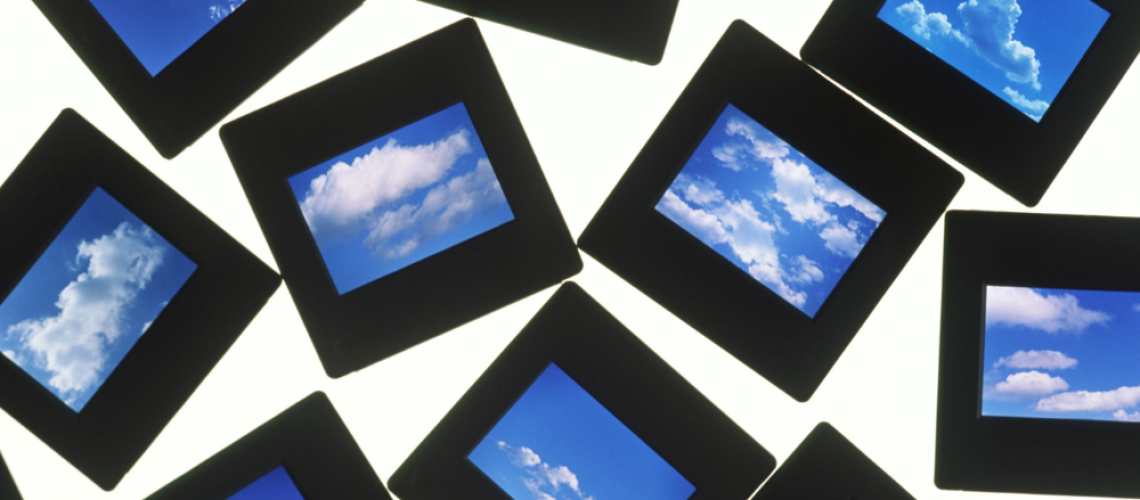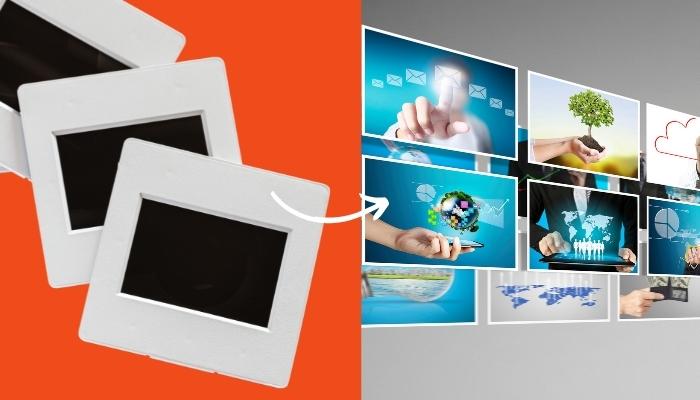
lewis
Reasons for converting slides to digital
- October 26, 2022
- , 8:13 am
- , Digitize media
Aside from photos, photographic slides are one of the oldest ways of saving memories. The photos existing on the slides are positive images as opposed to the negative images that are projected on the photo films. As with all other forms of printed photos, slides also are vulnerable to being damaged over time. This is where converting them to digital comes into play.
There are plenty of reasons for converting slides to digital. The first one is obviously to save them from getting irreparably damaged. Converting them to digital also allows you to view them any time you want. Additionally, if you convert photo slides to digital, you can share them with an unlimited amount of friends and family.
Let’s take a deeper look at the importance of digitizing photo slides and the ways you can do it.
Why should you convert photo slides to digital?

Photographic slides have been around for almost 200 years. In that duration, innumerable memories have been saved in these slides, some of which have been passed down the generations. All of these memories are extremely precious to the people holding them. But as the years pass, these slides naturally start to deteriorate.
As slides differ from regular photographs in that they usually can’t be viewed without a projector, people nowadays have no way to see them as slide projectors are extremely rare. So, what should they do? Should they just sit idly and let their precious memories fade away? And what good are memories if you can’t see them once in a while and reminisce?
Well, there is a way to resolve all of these issues, which is to convert photographic slides into digital ones. But why should you do it? The following reasons will certainly persuade you to do just that.
1. To save them from damage
One of the main issues with photo slides is their susceptibility to being damaged easily. And as these slides are a thing of a time that is fairly distant from now, their age is bound to catch up with them. So it’s only natural for them to start fading away and become increasingly fragile. The only way to save them from being completely damaged is to digitize them.
Once you digitize photo slides, they are immune to being damaged or fading away as they will be preserved in digital format. So it won’t matter if your physical slides are damaged, as you can still access the digitized files anytime you want. This brings us to-
2. To gain easier access
As slides are not like typical photos, they need slide projectors for people to be able to see them. But as slides have become a thing of the past, the production of slide projectors has stopped and they are becoming increasingly rare. Because of this, viewing them is also becoming tougher and tougher.
Converting slides into digital allows you to get rid of this completely. Once these slides are scanned and digitized, they will become readily available for you or anyone with access to these files to view. This makes a world of difference to people who have lost loved ones and their only memories are in these slides.
If these slides weren’t digitized, they wouldn’t have been able to see their long-lost loved ones no matter how much they wanted to.
3. They make excellent gifts
Digital memories are becoming more and more prominent as gifts as the years are going by. One of the components of digital memories is the photographic slides. You can make a slideshow with them ( this is where the word ‘slideshow’ originates, by the way) or you can make memory books with them. Both of these options are excellent gifts, especially for our elders.

Older people love to reminisce about their past and remember their loved ones whom they’ve lost over the years with great fondness. So what better way to make their day than to give them digitized versions of photo slides as gifts, which contain photos of their golden years as well as their loved ones who have passed away?
4. They’re easily shareable
One of the biggest selling points of digital memories is how easy they are to share with people. In the case of physical photos and slides, it isn’t possible to share them among people, not among a large number of people anyway. Even if you could share it, every single copy has a printing cost.
But with digitized slides, the number of people they can be shared with is unlimited. Once they’re scanned, these slides can be shared among a lot of people. If someone somehow deletes the slides by mistake, they can easily get them again via sharing through email or any other means.
5. Storing them is a piece of cake
As we store our photos and slides, over the years they start to pile up and start occupying more and more space in our homes. It doesn’t look good when there are dozens of shoeboxes filled to the brim with photos and slides occupying space that could’ve been used otherwise. Also, keeping them in such a way for a long time makes them even more vulnerable to damage.
Once the slides are digitized, they won’t need a single square millimeter of space in your home. Because they will be stored in either the cloud or your computer. So at the end of the day, you’ll end up saving a lot of space in your home while also ensuring safe storage for all your slides.
Things to consider before converting slides to digital
Digitizing photographic slides will only provide the best results if it is done correctly. There are a few things you have to take care of before you proceed with digitizing your old slides. They are:
- Resolution of the slide: Usually we correlate higher-resolution photos with better quality. While it is correct in most cases, in the case of older photos and slides, things can be a bit trickier. Yes, the higher the resolution is, the better the photo quality normally is. But often photos with higher resolutions are more grainy than those with lower resolutions. So when it comes to scanning photo slides, sometimes it’s better if the photo resolution is a little lower.
- Removing dust as well as scratches: As slides age, they are scratched and also collect a lot of dust. It’s mandatory to remove them before scanning to get the perfect result. The dust can be cleaned with a clean, lint-free cloth. On the other hand, top-quality scanners have the technology to remove scratches from slides.
- Correcting and restoring colors: As the colors fade from the slides due to old age, they lose some of their luster. But the color of these slides can be easily restored and corrected by various software like photoshop after they’re scanned.
- Ensuring the scanner is the right one for the slide format: The most common slide format is the 35mm one. But there are a few other formats of slides such as 110mm, 126mm, etc. Not all scanners can scan these other formats, so you must ensure the scanner you are using supports your slide’s format.
Final Words
If you have old photo slides in your home, they should be digitized as soon as possible. Among all the reasons for converting slides to digital, the preservation of the slides is the greatest. So digitize your old scans and save them for years to come, not only for the sake of the older generation but for the next one as well.
FAQ
1. What is the best way to convert slides to digital?
There are a lot of ways to convert slides to digital. Among all of them, using a scanner specifically designed to scan slides is the best. Although these scanners are a bit on the costly side, if you want the best results in terms of quality and resolution, these scanners will provide you with the best ones.
2. What can you do with old slides?
There are two things you can do with old slides. First, you can keep them as they are and view them using a slide projector. Second, you can scan and digitize them which has a lot of benefits, the greatest of which is preserving them.




